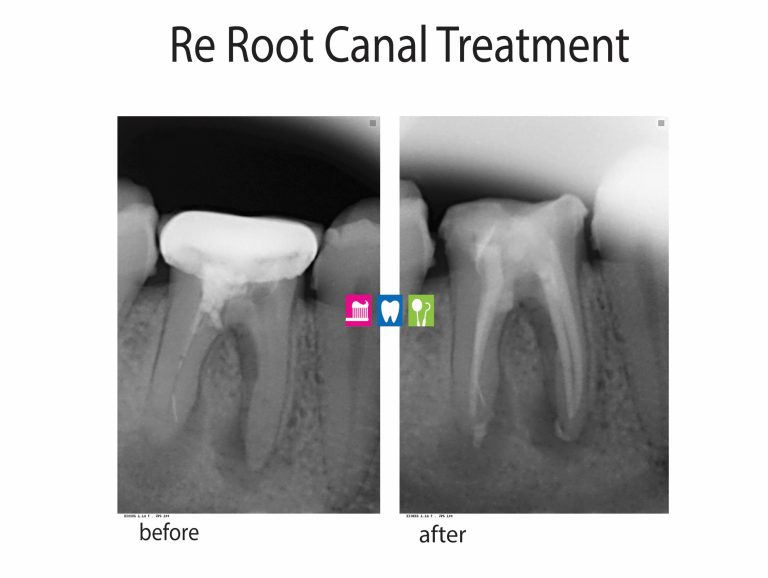Last Updated on 3 weeks by Dr. Michelle G. Brito
If there’s one procedure that strikes fear in the hearts of patients, it’s a root canal. Just mention of it can bring up images of excruc pain and discomfort. Modern dentistry has come a long way in making root canals a pain-free experience. In this blog post, we will debunk the common misconceptions surrounding root canal pain, explore the techniques used to ensure a pain-free procedure and discuss the advancements in pain management. So, let’s dive in and discover the pain-free root canal options and methods available today.
Understanding Root Canal Pain
Root canals have long been associated with pain and discomfort, but it’s essential to understand the reasons behind this perception. The pain associated with root canals is primarily caused by the infection within the tooth’s pulp, which is the soft tissue containing nerve endings. This infection can lead to severe toothache and sensitivity. However, it’s important to note that the purpose of a root canal treatment is to relieve this pain rather than cause it.
Common misconceptions about root canal pain
There are several misconceptions surrounding root canal pain that contribute to patient anxiety. One common myth is that root canals are excruciatingly painful. In reality, with advancements in anesthesia and pain management techniques, root canals can be virtually pain-free. Another misconception is that the procedure will worsen the toothache. On the contrary, a root canal is intended to alleviate the pain by removing the infected pulp.
Local Anesthesia in Root Canals
Local anesthesia plays a crucial role in making root canal procedures pain-free by numbing the affected area and eliminating any discomfort during the treatment. Dentists use different types of local anesthesia to ensure a painless root canal experience.
Different types of local anesthesia used in root canal treatments
- Infiltration anesthesia: This type of anesthesia is commonly used for root canals. The dentist injects the anesthesia near the tooth to numb the specific area being treated. It’s highly effective in ensuring a pain-free procedure.
- Nerve block anesthesia: Nerve block anesthesia involves injecting the anesthesia near a nerve that supplies sensation to a larger area, numbing an entire section of the mouth. This type of anesthesia is utilized when the infection and pain extend beyond a single tooth.
Sedation Dentistry for Root Canals
For patients who experience severe anxiety or fear around dental procedures, sedation dentistry provides a safe and effective option for a pain-free experience. There are different sedation options available, depending on the patient’s needs and comfort level.
Different sedation options available for patients
- Nitrous oxide: Also known as laughing gas, nitrous oxide is a commonly used sedative in dentistry. It is inhaled through a mask and induces a state of relaxation and calmness. Nitrous oxide is fast-acting and wears off quickly, allowing patients to resume their normal activities after the procedure.
- Oral sedation: This involves taking a prescribed medication, usually in the form of a pill, before the root canal procedure. Oral sedation induces a state of deep relaxation and drowsiness, allowing patients to remain calm and anxiety-free throughout the treatment.
Technological Innovations
Technological advancements in dentistry have revolutionized root canal procedures, making them more comfortable and efficient. These innovations have contributed significantly to pain-free experiences for patients.
Laser dentistry and advanced equipment
Laser dentistry has emerged as a game-changer in root canal treatments. Lasers are used for various purposes, such as sterilizing the root canal, removing infected tissue, and shaping the canals. This technology minimizes discomfort, reduces the need for anesthesia, and ensures more precise treatment.
Preventive Measures for Pain
Dentists take several steps before and during the procedure to prevent pain and maximize patient comfort. Clear communication between patients and dentists is essential in managing expectations and minimizing pain.
Importance of communication between patients and dentists
Open and transparent communication between patients and dentists is crucial in addressing any concerns or fears related to pain. Dentists can explain the steps involved in the procedure, provide reassurance, and answer any questions patients may have. This helps create a supportive and pain-free environment.
Post-Procedure Comfort
After a root canal procedure, some discomfort is expected as the area heals. However, there are several tips and techniques to manage post-root canal discomfort and ensure a smooth recovery.
Tips for managing post-root canal discomfort
- Pain medication: Over-the-counter pain relievers, such as ibuprofen, can help manage any discomfort following a root canal. Dentists may also prescribe medications to alleviate pain if necessary.
- Cold compress: Applying a cold compress to the affected area for short periods can help reduce swelling and discomfort.
Alternative Pain Management Techniques
In addition to traditional pharmacological approaches, non-pharmacological techniques can also contribute to a pain-free root canal experience. These techniques focus on relaxation and mindfulness during the procedure.
Relaxation techniques and mindfulness during the procedure
- Deep breathing: Deep breathing exercises can help patients relax during the procedure. Taking slow, deep breaths can promote a sense of calmness and reduce anxiety.
- Guided imagery: Visualizing pleasant and calming images during the root canal procedure can distract patients from any potential discomfort and promote relaxation.
Patient Testimonials
Real-life experiences of patients who have undergone pain-free root canals can provide reassurance and highlight the positive outcomes of these procedures.
“I was terrified of getting a root canal, but my experience was far better than I anticipated. The dentist explained everything clearly, used local anesthesia effectively and made sure I felt comfortable throughout the procedure. It was virtually pain-free, and I couldn’t be happier with the results.” – Sarah M.
Dentist-Patient Communication
Clear communication between dentists and patients plays a crucial role in managing expectations and addressing concerns about pain. Dentists can take specific steps to ensure that patients feel heard and understood.
Addressing patient concerns about pain.
Dentists can address patient concerns about pain by explaining the modern techniques and advancements in pain management utilized during root canal procedures. Providing informative materials and answering any questions can alleviate anxiety and create a more relaxed environment.
Comparing Pain Levels: Root Canal vs. Other Dental Procedures
Contrary to popular belief, root canals do not necessarily cause more pain than other dental procedures. Advancements in pain management have made root canals less painful than ever before.
Pain management advancements in root canals
With the use of local anesthesia, sedation options, and technological innovations, root canals have become increasingly pain-free. Dentists strive to ensure maximum comfort for patients, making root canals comparable in pain levels to other routine dental procedures.
Conclusion
Root canals no longer need to be associated with fear and pain. Thanks to advancements in pain management techniques and technologies, root canal procedures can be virtually pain-free. From local anesthesia to sedation dentistry and innovative tools, dentists are committed to providing a comfortable and enjoyable experience for their patients. So, if you need a root canal, remember that the pain can be minimal, and the result is a healthy, pain-free smile.
Remember, maintaining regular dental check-ups and practising good oral hygiene is essential for preventing the need for root canal treatments in the first place. Keep your smile healthy and pain-free!






